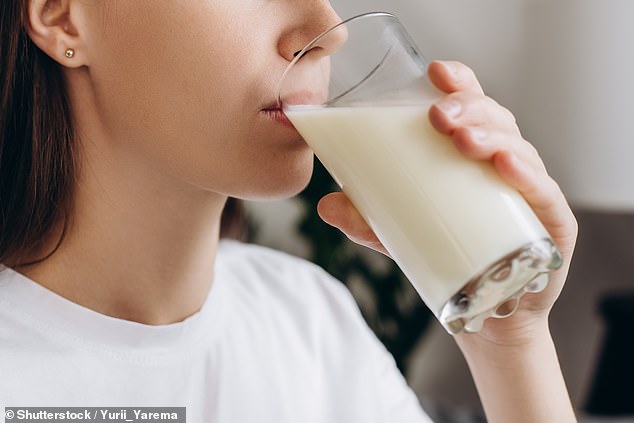Revealed: The best drinks to extinguish the pain of spicy food – and why you should NEVER opt for iced water
With the weekend just around the corner, many Brits are looking forward to an evening on the couch with a delicious takeaway meal.
And if your favorite choice is a spicy curry, new advice will be music to your ears.
Dr. Daniel Eldridge, senior lecturer in chemistry at Swinburne University of Technology, has revealed the best drinks to dull the pain of spicy food.
When your mouth is on fire, you might be tempted to reach for a glass of ice water.
Dr. However, Eldridge strongly advises against this, and instead suggests that a drink of oil, milk or ice is the ideal choice.
Dr. Daniel Eldridge, senior lecturer in chemistry at Swinburne University of Technology, has revealed the best drinks to ease the pain of spicy food

Whether it’s a curry, chili sauce or hot pot, spicy foods all contain a family of compounds called capsaicinoids.
Whether it’s a curry, chili sauce or hot pot, spicy foods all contain a family of compounds called capsaicinoids.
These compounds do not physically warm your mouth.
Instead, they cause a burning sensation due to a reaction with the receptors in your mouth, which send a signal to the brain indicating that something is hot.
The only way to reduce this heat is to remove the capsaicin from your mouth.
Write in an article for The conversation, Dr. Eldridge asked, “So why doesn’t drinking water help get rid of that spicy feeling? And what would work better instead?’
The chemist explains that capsaicin is a hydrophobic molecule, meaning it hates contact with water and will not mix with it easily.

When your mouth is on fire, you might be tempted to reach for a glass of ice water. Dr. However, Eldridge strongly advises against this and instead suggests that a swig of oil, milk or ice is the ideal choice (stock image)
“If you try to wash away hydrophobic capsaicin with water, it won’t be very effective because hydrophilic and hydrophobic substances don’t mix,” he said.
Ice water is an especially poor choice because capsaicin is even less soluble in water at lower temperatures.
“You may get a temporary feeling of relief while the cold liquid is in your mouth, but once you swallow it, you’ll be back where you started,” Dr. Eldridge added.
Instead, it’s best to opt for a drink that is also hydrophobic.
A drink of oil would do the trick, although Dr Eldridge realizes this ‘might not be as palatable’ and recommends milk instead.
“Milk is an ideal choice for two reasons,” he explained.
‘The first is that milk contains hydrophobic fats, in which the capsaicin dissolves more easily, causing it to be washed away.
‘The second is that dairy products contain a protein called casein. Casein plays a big role in keeping the fat in your glass of milk mixed, and also has a strong affinity for capsaicin.
‘It will easily wrap and encapsulate capsaicin molecules and help carry them away from the receptor. This relieves the burning sensation.’
If the idea of drinking milk makes your stomach churn, Dr. Eldridge has some other recommendations, including raita and ice cream.
However, contrary to popular belief, reaching for an ice-cold beer will not help relieve the pain.
Although capsaicin is highly soluble in alcohol, most beers contain only between four and six percent alcohol, with most of the liquid being water.
Dr. Eldridge added: ‘The small amount of alcohol in your beer would make it slightly more effective, but not by much.
“Your curry and beer may taste great together, but that’s probably the only benefit.”
